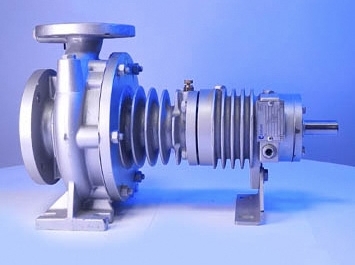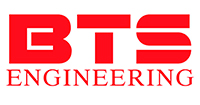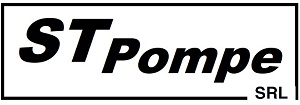2021 — Prom-nasos.com.ua
December 15, 2021
The end seal of the KSB Multitec RO MTC A 32/ 8A-2.1 10.81 pump.

High pressure pumps Multitec KSB - multifunctional, reliable, with low positive suction head. Structurally - multistage centrifugal sectional pump, vertical or horizontal installation, with a closed radial impeller with spatially curved blades.
Types of seals:
-Mechanical seal with secondary belows seal, non-compensated hydraulically U3BEGG EPDM 61 (RGM13) .
- Mechanical seal hydraulically compensated
Q1Q1VGG FPM - 163 (5B) , 63 (H7N) ,
Q1Q1VGG EPDM- 43 (57B) ,
AQ1EGG, Q1AEGG EPDM - 164 (5B) , 64 (H7N) ,
BQ1EGG, Q1BE4GG EPDM- 167 (5B) , 67 (H7N)
AQ1EMG EPDM- 69 (HRN)
AQ1EGG, Q1AEGG EPDM- 181 (5B) , 42 (57B) , 81 (H7N)
Q12Q1VGG FPM-53 (HJ977GN)
AQ1VGG,Q1AVGG FPM - 155 (5B) , 45 (57BBO) , 55 (H7N)
BQ1EMG EPDM - 59 (HRN)
AQ1V5GG EPDM 88 (H75N) .
-Mechanical seal with secondary belows seal, non-compensated hydraulically U3U3VGG FPM 68 (MG13-G60, MG1S4-G4) .
-Mechanical seal compensated hydraulically U2U2VGG, U3U3VGG FPM 168 (5B) , 68 (H7N) .
-Mechanical seal non-compensated hydraulically
AQ1VMM FPM 80 (MG12-G6) ,
Q1AVMM FPM 82 (M7N) ,
Q1Q1VMM FPM 83 (MG12-G6) .
-With barrier liquid inflow AQ1AEGG EPDM AQ1EGG, Q1AEGG EPDM 171 (5B) , 71 (H7N) .
-Double mechanical seal in "tandem" location
AQ1EGG, Q1AEGG EPDM 172 (5B/5B) , 72 (H7N/H7N) ,
AQ1VGG, Q1AVGG FPM 174 (5B/5B) , 74 (H7N/ H7N) .
-Double mechanical seal in a back-to-back arrangement
AQ1EGG, Q1AEGG EPDM 173 (5B/5B) , 73 (H7N/H7N) ,
AQ1VGG, Q1AVGG FPM 175 (5B/5B) , 75 (H7N/H7N) .
-Cartridge mechanical seal - hydraulically compensated mechanical seal
AQ1EMG EPDM 92 (Cartex SN6),
Q1Q1VMG FPM 93 (Cartex SN6),
AQ1VMG FPM 95 (Cartex SN6).
Materials used:
A-Carbon graphite impregnated with antimony; B-Carbon graphite impregnated with artificial resins; Q1-Silicon carbide, monolith, sintered without pressure; Q12- Silicon carbide, shrinkage, sintered without pressure; U2- Tungsten carbide bonded with nickel (monolith); U3-Tungsten carbide bonded with NiCrMo; E-Ethylene Propylene rubber; E4-Ethylene Propylene rubber of peroxide vulcanization; V- Fluorocarbon rubber; V5 Fluorocarbon rubber, for example, Viton (Shore 90); M - Hastelloy G Chromium-nickel-molybdenum steel.
December 9, 2021
IRG 50-125 pump - 14 years of successful operation!

Wilo VeroLine Pump IPL50/160-0,55/4-IE1 (122033998) with a power of 0.55 kW - with a dry rotor, Inline, with a threaded or flanged connection. They are used in heating, air conditioning and cooling systems, for pumping water, water-glycol mixtures without abrasive substances. The mechanical seal is sliding, single, bellows type, in the AQEGG standard. R-MG1-17, adopted by our craftsmen, has proven itself well as an inexpensive and reliable alternative to the original seal 122097593 .
November 15, 2021
Centrifugal pumps for hot liquids, oils 350С

In various fields of industry and production, for hot oil circulation, boiler thermal oil pumping.
For high-temperature heat carriers, which are used in industrial spheres as part of technological installations for processing petroleum products or stand-alone stationary, modular and transportable boiler houses used in heat supply systems using diathermic oil as a heat carrier.
November 11, 2021
Replacement of Calpeda NM 40/16CE End Pump Seal

NM pumps manufactured by Calpeda are centrifugal monoblock pumps with a vertical pressure nozzle, a horizontal suction nozzle, and a horizontally positioned shaft. It is used to raise pressure in water supply systems in domestic and industrial networks, in fire-fighting installations, in air conditioning and cooling systems. Cantilever pumps NM 40/16CE are equipped with a mechanical seal R3-X6H62V6 D20 16006040000 , designed for clean non-abrasive liquids with temperatures from -10 °C to +90 ° C. Our specialists have replaced the original mechanical seal with a seal in the materials Graphite/ Silicon carbide / Viton , since such materials are better suited for the vegetable oil medium.

Chemical pump housings, which are presented in our the store can be made from a variety of materials for the buyer's choice, including PP (polypropylene), GFRPP (polypropylene with glass fiber), CFRPP (polypropylene with carbon fiber), PVDF (polyvinylidene difluoride), GFRETFE (Ethylenetetrafluoroethylene, glass fiber reinforced ETFE), CFRETFE (Carbon fiber ETFE) and PTFE .
Among the materials from which the flow parts of chemical pumps are made, polypropylene (PP) has long occupied a prominent place. Such a wide application is due to its relative versatility and cheapness. Polypropylene has a good balance of properties and cost, which most thermoplastics do not achieve. Polypropylene provides easy processing, excellent chemical resistance and good mechanical properties.
However, there are two characteristics in which it is significantly inferior to metals – mechanical resistance and maximum operating temperature.
Relative volumetric abrasive abrasion of various materials in accordance with the method of studying abrasive wear in an abrasive mixture (ISO 15527) – lower values are preferable.
Glass fiber (GFRP) and carbon fiber (CFRP) reinforcement technologies have been developed to improve these performance.
CFRP and GFRP plastics differ primarily in the use of different fibers. Plastics with the addition of carbon fibers have significantly higher strength, and are also lighter due to lower density. CFRP is five times lighter than steel and has only about 60 percent of the weight of aluminum and is used where other materials reach the limit of their load-bearing capacity . Also important properties of CFRP are its high stability, low thermal expansion, and X-ray transparency. The advantage of plastics with the addition of fiberglass is a lower cost and slightly higher resistance to shock loads and shear.
There are no restrictions on the possible use of CFRP. The most common applications of CFRP are aerospace, automotive, and wind power. CFRP is also used in medical engineering, robotics, automation technologies, measurement technology and optics, as well as in Mechanical Engineering and in the sports and recreation sector.
GFRP glass fiber reinforced polypropylene (PP) has better tensile strength, tensile elasticity, higher maximum operating temperature (70°C), better dimensional stability when forming with reduced tensile strength.
Significantly better performance in terms of chemical and mechanical and temperature stability can be achieved by using polyvinylidene difluoride – PVDF as the pump part material. This material has good abrasion resistance, the highest tensile strength of all fluorocarbons except ethylene tetrafluoroethylene ETFE. Good overall chemical resistance and maximum operating temperature up to 95°C. The disadvantages of this material are the high cost, the inability to use reinforcing fibers and poor resistance to concentrated smoky acids.
Ethylenetetrafluoroethylene-ETFE has significant advantages over PVDF. Even at low temperatures, it has high impact strength and is quite rigid by fluoropolymer standards. It can be reinforced with glass fiber and carbon fiber, providing even higher mechanical performance. It has the highest tensile strength similar to polypropylene. Its chemical resistance is not inferior, although not as good as that of PTFE, especially to ketones and halogenated hydrocarbons.
Glass fiber reinforced (GFRETFE) or carbon fiber reinforced (CFRETFE) ethylene tetrafluoroethylene has increased tensile strength, tensile modulus, higher resistance to high temperatures, and less linear expansion compared to unmodified ETFE.
PP / GFRPP material can withstand temperatures up to 75 ℃. PVDF material can withstand temperatures up to 95 ℃. CFRETFE material can withstand temperatures up to 150 ℃.
The correct choice of pump housing material depends on the type of chemical that the equipment will pump and its concentration.
● – excellent
○ – good
△ – satisfactory
× - bad
September 21, 2021
Repair and replacement of the mechanical seal, pump CDLF 8-200, dearator water of the boiler DKVR 6.3

Causes of wear of the friction pairs of the mechanical seal of the feed pump of the boiler DKVR.
As a result of the operation of the pressure increase pump of a steam boiler, a feed pump operating on the supply of deaerator water without a bypass, for de-airing the chamber of the mechanical seal installation.
Reasons: when the water supply pressure from the deaerator, water increases at a temperature of 105 C, a vacuum occurs at the pump suction, which leads to boiling and the formation of micro-bubbles of steam, which, with the design feature of vertical centrifugal pumps, fall into the upper chamber of the pump, where the mechanical seal is installed. As a result, the mechanical seal also works "dry". An example of a photo of mechanical seal wear in a vertical centrifugal pump of the CR GRUNDFOS, WILO MVI, CALPEDA, DAB, SPERONI, CDLF type. The whole difference is in the brand, and not in the principle of operation and the device of the pump.
We provide our customers with service and warranty support, post-warranty service and the supply of spare parts for pumps throughout the entire service life.
September 14, 2021
Repair of the ALLWEILER AG NTT pump for thermal oil 350 С

Overheated oil pump for thermal boilers, bitumen heating, hot oil pump ALLWEILER
Our company offers mechanical seals for ALLWEILER pumps
Replacement of pump bearings ALLWEILER AG NTT
Replacing the mechanical seal of the ALLWEILER pump
Assembling the pump
Our company performs high-quality repair of pumps and the sale of new equipment with an extended warranty of 24 months.
+38 095 6563757
+38 067 3607101
+38 0362 62-20-33

The BTS Engineering company offers decanter centrifuges for processing sunflower and rapeseed foots , which contains 25% of dry goods – it is a precipitate that is formed during the production of vegetable oil. The basis of the non-fat complex of sunflower foots are phospholipids, protein and mucous substances of the starting oil. Sunflower foots has a high nutritional and energy value, it is processed at a temperature of 30 70 C
We propose to divide the foots obtained during production in order to obtain a dehydrated cake, feed and filtrate with a minimum content of suspended solids for further purification.
The quality of the filtrate after the centrifuge based on the above input parameters:
The solid content in the filtrate (separated oil) at the output is 0.5 - 0.3 % of DS
Sunflower or rapeseed foots are secondary product that appears in the manufacture of unrefined sunflower or rapeseed oil. It is often used in chemical and feed mills. Fats are isolated from the foots, which are used in the production of drying oil.
The product is rich in fats and proteins. Therefore, it is part of the feed that makes up the daily diet of animals and birds. This supplement has a positive effect on the reproductive function, strengthens the immune system, improves growth and quality

Inlet of stillage filtrate after decanter 14000 kg at 3.5% dry matter. Evaporated moisture capacity 12600 kg / h
Concentrate: 1400 kg / h at 35% DM
Steam consumption 3458 kg / h at 6 bar
Recycled water consumption 250 m3 per hour
The total electrical power of the equipment is 118 kW
Platform dimensions 13 mx 5 mx 16 m
After evaporation of vinasse, the condensate is processed and sent to the technology, and the concentrate, after the evaporation plant, is sent to drying.






























































































































